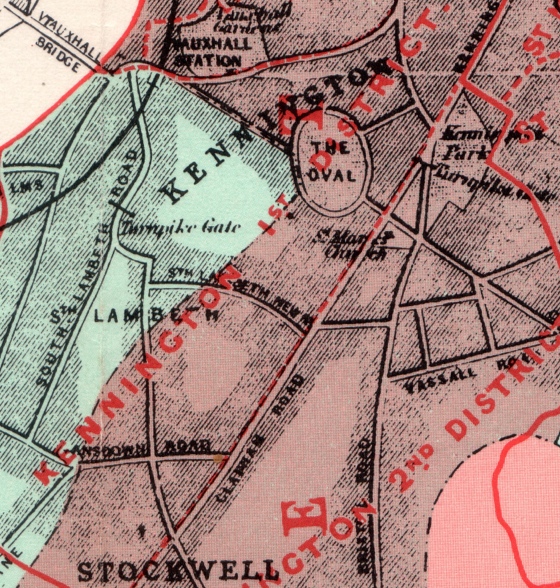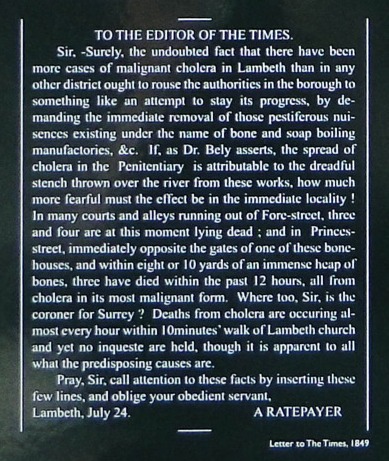Lambeth has a starring role in the fight against cholera - and a more important role than the more famous Broad Street pump. This was because it was shown that the survival chances of those living near the Clapham Road depended upon their choice of water company - i.e. the colour of your neighbourhood in the map below. (Click on this image to see a high res version covering a much larger area.)
The story began in 1848-49 with a major cholera epidemic in the streets behind what is now the Albert Embankment. A plaque at the river end of Black Prince Road records the then accepted view that cholera was caused by bad air ('miasma').
(Click on this image if you wish to read a larger version.)
This view was encouraged by epidemiologists of the time such as William Farr who showed that elevation was highly correlated to the occurrence of the disease. He also noted that topographical features were able to prevent th spread of certain certain diseases. This was a classic case of correlation not being the same as causation.
Then, in 1852, the Lambeth Water company built a new reservoir up the hill in Brixton and began to supply it with water filtered through Harwich sea shells from the non-tidal Thames at Seething Wells in Surbiton.
During the next cholera epidemic, in 1854, Dr John Snow argued that the illness was spread through water, and persuaded the local authority to close the Broad Street pump in Soho around which there had been a great many fatalities. But a proper scientific investigation was needed.
Snow accordingly then conducted his Grand Experiment in Lambeth, focussing on the area where some houses took their relatively clean water from the Lambeth Water Company, whilst other houses took theirs from the Southwark and Vauxhall Company. This company drew its waters direct from the nearby Thames where the contamination of water with sewage was common.
The first image, at the top left of this note, is is an extract from a map used by Dr Snow to analyse mortality rates. Southwark and Vauxhall Company's territory was coloured blue, but has faded to green on the map. Lambeth's territory is coloured red. The overlapping area (purple but faded to grey-red on the map) is where John Snow analysed the results of his natural experiment. (South Lambeth New Road is now Dorset Road.)
The statistics were dramatic (see table below) and proved that cholera was a water-borne disease. Snow's report of his study came to be regarded as a classic work in epidemiology.
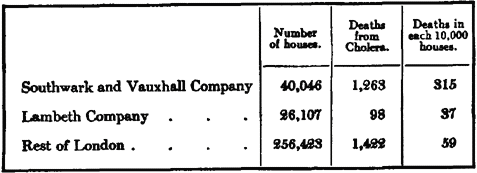
The Seething Wells plant can still be seen today on both sides of Portsmouth Road near the corner with Brighton Road - see photos below.
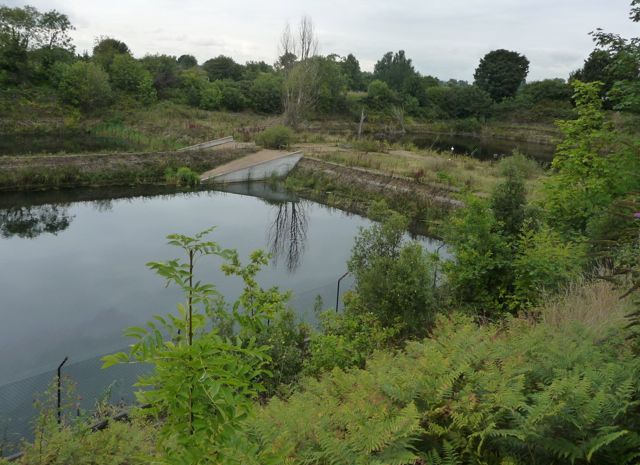
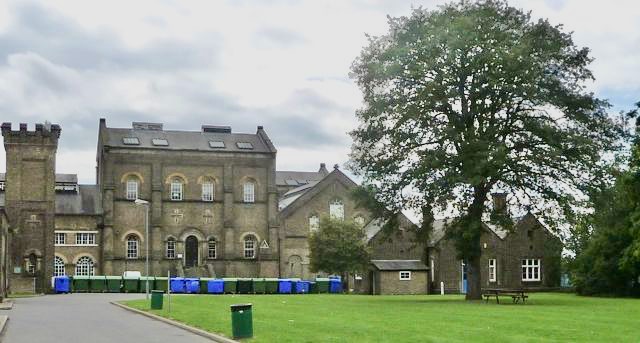
Note
- There is much more fascinating detail on the UCLA website
